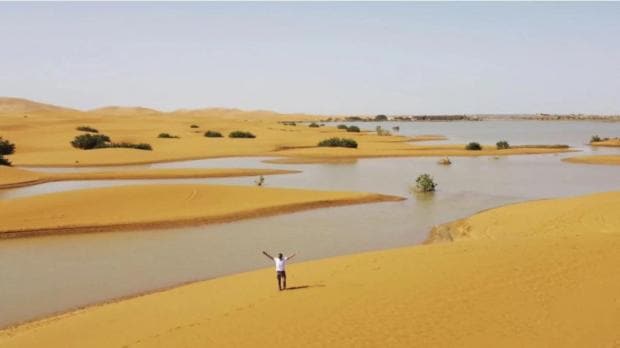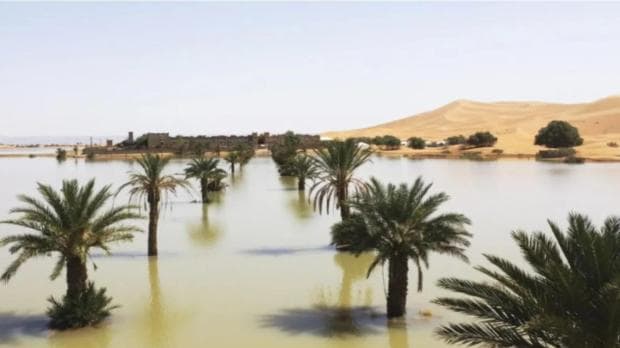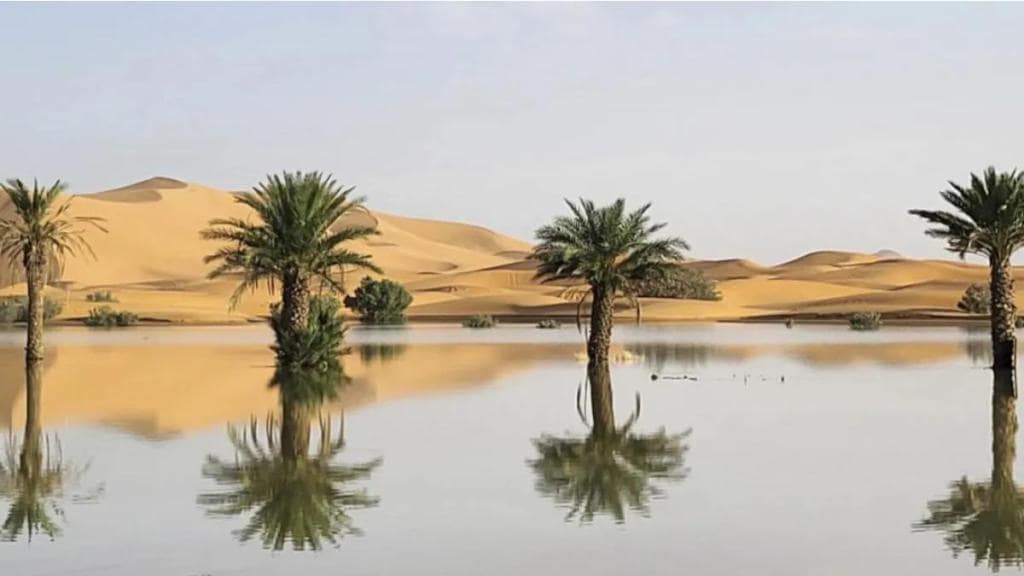A rare and unexpected downpour has transformed some of the driest corners of the earth. In the heart of the Sahara, pools of water now shimmer between palm trees and rolling sand dunes, bringing life to regions long parched by drought. Southeastern Morocco’s desert, where rain is a rare visitor, especially in late summer, has been rejuvenated by a cascade of water unlike anything seen in half a century.
The country’s meteorology agency reported that the village of Tagounite, located 450 kilometers south of the capital Rabat, received over 100mm of rain in just 24 hours this September, shattering the region’s average annual precipitation.

Recent NASA satellite images show that Lake Iriqui, which had been a dry lake bed for up to 50 years, has been replenished by heavy rainfall. “It’s been 30 to 50 years since we’ve had this much rain in such a short space of time,” stated Houssine Youabeb, an official from Morocco’s meteorology agency, as reported by the Associated Press.
Meteorologists identified the event as an extratropical storm, with experts warning it could have lasting effects on the region’s climate. According to Youabeb, as the air holds more moisture, it drives increased evaporation, leading to more frequent storms.

Last month, severe flooding in Morocco claimed 18 lives, affecting areas still recovering from an earthquake the previous year, The Guardian reported. Dammed reservoirs in the southeast of the country filled at unprecedented rates in September.
The Sahara Desert, which stretches over 9 million square kilometres across North, Central, and West Africa, is increasingly vulnerable to extreme weather driven by global warming. Scientists caution that storms of this scale could become more frequent in the region in the future.
Celeste Saulo, Secretary-General of the World Meteorological Organisation, explained, “As a result of rising temperatures, the hydrological cycle has accelerated. It has also become more erratic and unpredictable, and we are facing growing problems of either too much or too little water. A warmer atmosphere holds more moisture, which is conducive to heavy rainfall. More rapid evaporation and drying of soils worsen drought conditions.”

